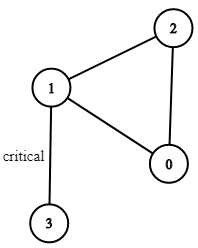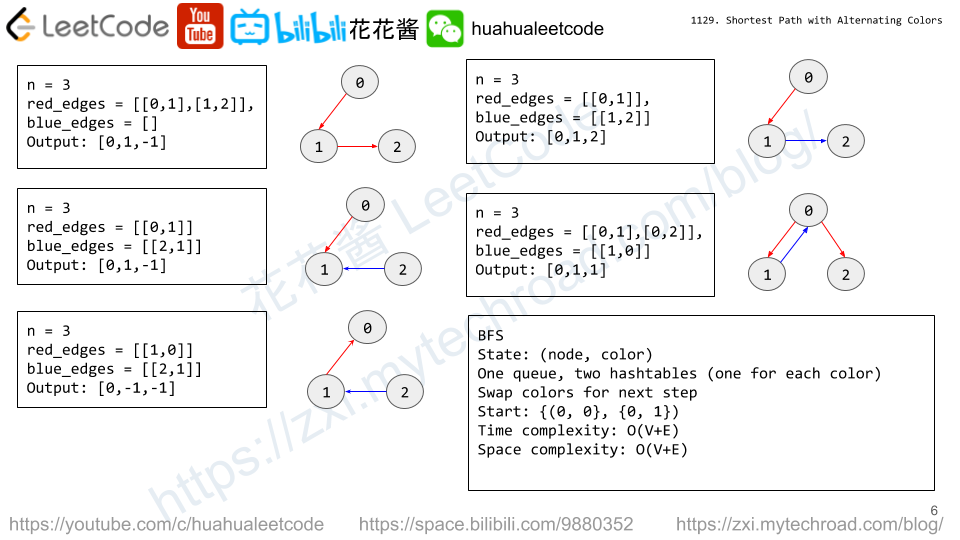There are n servers numbered from 0 to n-1 connected by undirected server-to-server connections forming a network where connections[i] = [a, b] represents a connection between servers a and b. Any server can reach any other server directly or indirectly through the network.
A critical connection is a connection that, if removed, will make some server unable to reach some other server.
Return all critical connections in the network in any order.
Example 1:

Input: n = 4, connections = [[0,1],[1,2],[2,0],[1,3]] Output: [[1,3]] Explanation: [[3,1]] is also accepted.
Constraints:
1 <= n <= 10^5n-1 <= connections.length <= 10^5connections[i][0] != connections[i][1]- There are no repeated connections.
Solution: Tarjan
Time complexity: O(v+e)
Space complexity: O(v+e)
C++
|
1 2 3 4 5 6 7 8 9 10 11 12 13 14 15 16 17 18 19 20 21 22 23 24 25 26 27 28 29 30 31 32 33 |
// Author: Huahua class Solution { public: vector<vector<int>> criticalConnections(int n, vector<vector<int>>& connections) { vector<vector<int>> g(n); vector<int> ts(n, INT_MAX); vector<vector<int>> ans; int t = 0; function<int(int, int)> tarjan = [&](int i, int p) { int min_i = ts[i] = ++t; for (int j : g[i]) { if (ts[j] == INT_MAX) { int min_j = tarjan(j, i); min_i = min(min_i, min_j); if (ts[i] < min_j) ans.push_back({i, j}); } else if (j != p) { min_i = min(min_i, ts[j]); } } return min_i; }; for (const auto& e : connections) { g[e[0]].push_back(e[1]); g[e[1]].push_back(e[0]); } tarjan(0, -1); return ans; } }; |





